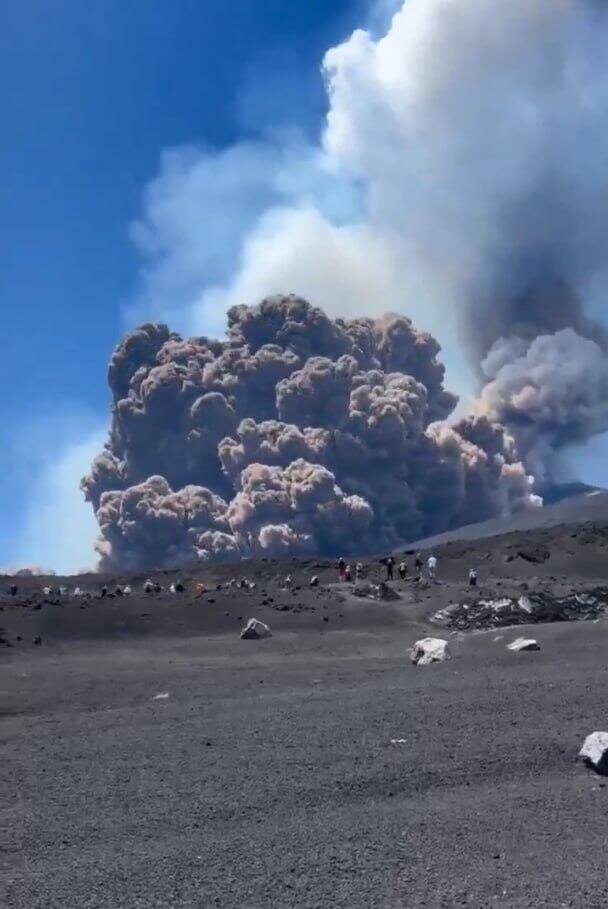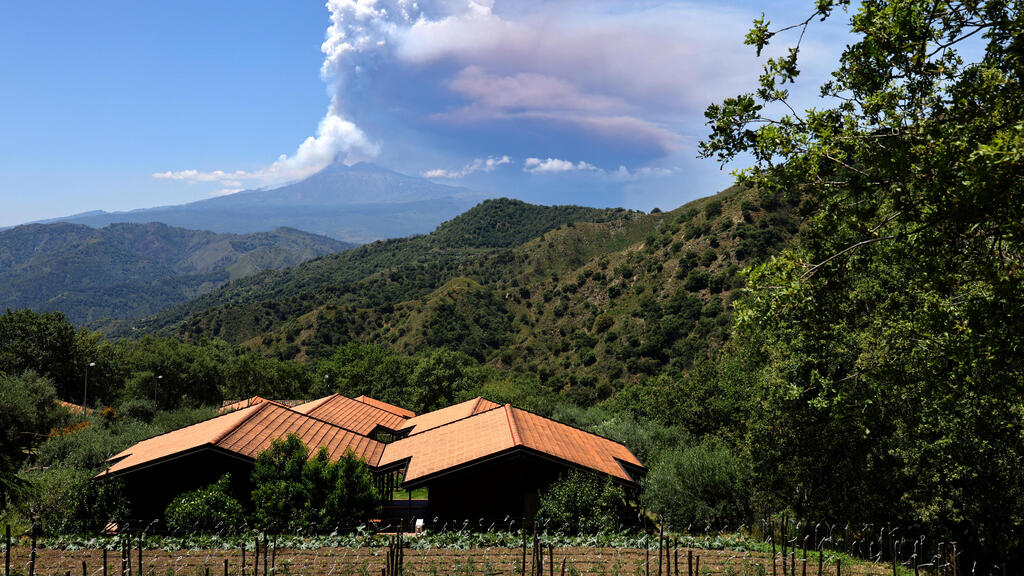Mount Etna, one of the world’s most active volcanoes, erupted again on Monday, sending a massive plume of ash into the sky and forcing tourists to flee in panic from its slopes.
Footage from the scene showed a towering mushroom cloud of smoke rising above the volcano as dozens of hikers and visitors ran down the trails on the eastern side of Sicily, trying to escape the growing ash cloud behind them.
Volcanic eruption at Mount Etna
Italy’s National Institute of Geophysics and Volcanology (INGV) reported that Etna had shown signs of volcanic activity earlier in the day, which escalated into “continuous explosions of increasing intensity” by the afternoon.
Get the Ynetnews app on your smartphone: Google Play: https://bit.ly/4eJ37pE | Apple App Store: https://bit.ly/3ZL7iNv
Mount Etna, Europe’s most active volcano, stands at roughly 3,300 meters (10,827 feet) and has long been a focal point for scientific research. Seismic tomography studies have been used to explore the links between tectonic activity and the magma pathways beneath the volcano.
The volcano sits on a tectonic subduction zone, where the African plate moves northward beneath the Eurasian plate. Its magma originates from material melting in the mantle above the subducting plates.
Etna’s location in a geologically complex region—characterized by mountain ranges, fault systems and ongoing tectonic movement—has made it a key site for studying volcanic and seismic interactions.
No injuries were reported as of Monday evening, but authorities are monitoring the situation closely.





